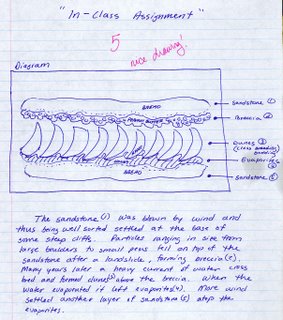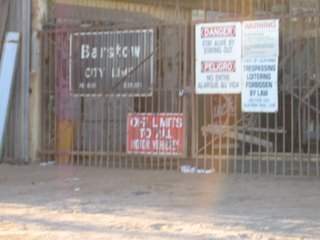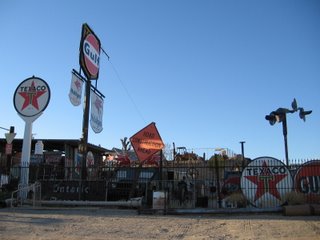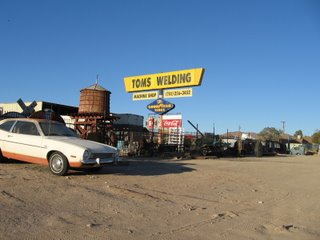In an effort to make a 3hr long night lecture on geology less mundane, I am constantly trying to come up with interactive activities for my surprisingly willing students to partake in.
Monday of this week was a lecture on weathering, soil and sedimentary rocks. I decided that a good way for the students to put it all together was to build a "sedimentary sandwich". We have these video projector devices (elmo document cameras) in some of our classes that are "more than your average overhead projector". Since they have a camera, you can do more things with them than just put a 2D diagram (or text for heavens sake) on the big screen. Read more about elmo here. See a picture of elmo here.
So back to my sedimentary sandwich. I built a sandwich, using different food stuffs to represent different sediment types, and we told a story of sedimentary environments together as a class. Then I made them draw it and write the story out for their future reference. Below are two examples (both by boys, and both receiving 5/5) of the two scenarios we mapped out. Clearly one of them is a better artist than the other...


The real reason I'm bringing this up is (well, because I made a comment on kilometres' blog actually) because my choice of sandwich ingredients - crunchy PB and honey being the main culprits - made for a very very messy situation. There I was, gooey hands in front of the document camera - on the big screen for everyone to see - and I had nothing to wipe them on. I had to lick my fingers, there was no choice at all... Even better of course, is that I was operating with PB and honey on a piece of expensive digital equipment. Not to worry, I had a paper plate underneath it all...
Next week is metamorphic rocks - I'm hoping no one minds if I iron on top of elmo.
















































